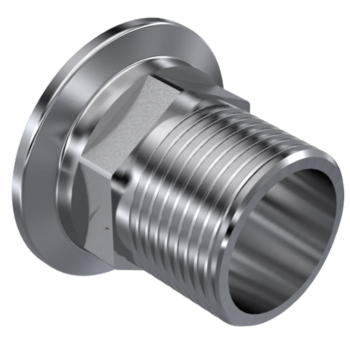Slip On Flanges Suppliers
SORF, SOFF, SO Flange Manufacturers
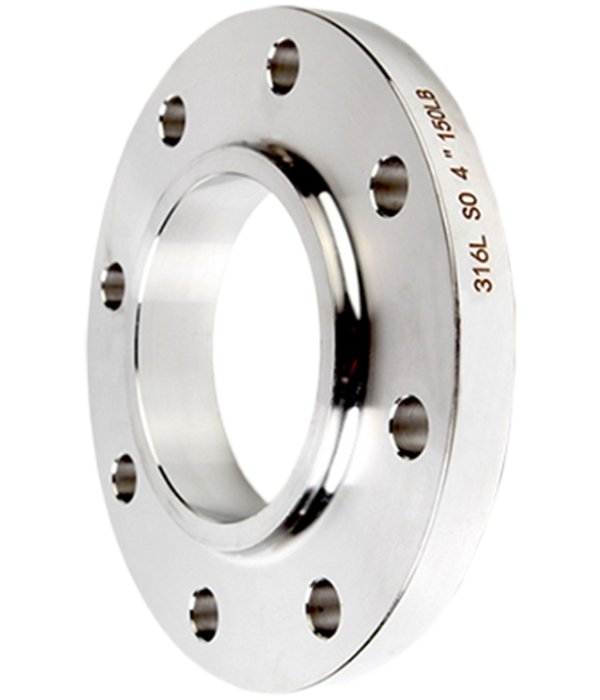
ASME B16.5 Slip On Flanges: Dimensions | Specifications | Material Grade | Standards | About Slip-on Flange | All Product Types
Nutech Overseas is a reputed manufacturer and exporter of Slip-On Flanges, including variants like SO Flanges, SORF Flanges (Slip-On Raised Face), and SOFF Flanges (Slip-On Flat Face), produced in accordance with ASME B16.5 and ANSI B16.5 standards. These flanges are widely used in low-pressure piping systems where frequent dismantling is required. The design features a bore slightly larger than the pipe, allowing easy insertion before fillet welding at both sides.
We supply Slip-On Pipe Flanges in various pressure classes such as Class 150, 300, 600, and above, with options for both raised face (RF) and flat face (FF) configurations. Customers often inquire about the slip-on flange dimensions and weight chart to match specific pipeline requirements, and we provide detailed technical documentation covering outside diameter, bolt circle diameter, thickness, hub height, and flange weight based on standard sizes from ½” to 48”.
Our slip-on flanges are manufactured using premium-grade materials like Stainless Steel (ASTM A182 F304/304L, F316/316L), Carbon Steel (ASTM A105, A350 LF2), Alloy Steel (F11, F22, F91), Duplex Steel (UNS S31803), Super Duplex (UNS S32750, S32760), and Nickel Alloys such as Inconel 625, Hastelloy C276, Monel 400, and Alloy 20. We also supply Copper Nickel Slip-On Flanges, Marine Grade Flanges, and High Pressure SO Flanges for critical applications.
Buyers searching for slip-on flange price can request a quick quote by material grade, size, and pressure rating. Prices vary based on specifications, coating, and surface finish, but Nutech guarantees competitive pricing with global export support. Each flange is tested for dimensional accuracy, surface finish, pressure performance, and welding compatibility to ensure hassle-free installation in industries like oil & gas, petrochemical, chemical processing, shipbuilding, and water treatment.
As a leading Slip-On Flange Supplier in India, we offer flexible packaging, documentation, and worldwide logistics support for EPC contractors, OEMs, and industrial plants.
ASME B16.5 Slip-On Flange | SORF / SOFF Flange Manufacturer in Stainless Steel, Carbon Steel, Alloy Steel, Duplex & Super Duplex
For complete technical details, including dimensions, pressure rating classes, weight charts, sizes, tolerances, and material specifications of our ANSI B16.5 Slip on Flanges, please download the full Catalog PDF below.
Slip-On Pipe Flanges Available in Class 150 / 300 / 600 – Raised Face (RF), Flat Face (FF), Ring Type Joint (RTJ) – Sizes ½″ to 48″
Technical Specifications of Slip-On Flanges
| Specification | Details |
|---|---|
| Type | Slip-On Flange (SO), Raised Face (SORF), Flat Face (SOFF), RTJ (Ring Type Joint) |
| Design Standard | ASME B16.5, ANSI B16.5, ASME B16.47 Series A & B, MSS-SP-44, BS 4504, EN 1092-1, DIN |
| Size Range | ½″ NB to 48″ NB (DN15 to DN1200) |
| Pressure Ratings | Class 150, 300, 600, 900, 1500, 2500 (PN6 to PN400 in EN standard) |
| Face Type | Raised Face (RF), Flat Face (FF), Ring Type Joint (RTJ) |
| Flange Thickness | As per ASME B16.5 / B16.47 or EN 1092-1 dimensional standards and pressure class |
| Bore & Hub Design | Slip-on design with pipe inserted before welding; beveled or smooth bore as per requirement |
| Welding Type | Fillet weld on both inner and outer side of pipe-to-flange connection |
| Surface Finish | Stock finish (3.2–6.3 μm), Smooth finish, Serrated concentric or spiral finish as per RF/FF |
| Gasket Compatibility | Spiral wound, Ring gaskets, Full face or raised face gaskets based on flange type |
| Drilling Template | Conforms to ANSI B16.5 or other applicable flange drilling standards |
| Coating / Protection | Rust preventive oil, Black paint, Yellow transparent varnish, Hot-dip galvanized (on request) |
| Dimensional Tolerances | As per ASME B16.5, EN 1092-1, MSS-SP-44 or client drawing/specifications |
| Testing & Inspection | Dimensional check, Hydrostatic test, PMI, Visual inspection, NDT (UT/MPI as required) |
| Certification | EN 10204 Type 3.1 / 3.2, IBR Approval, ISO 9001, PED 2014/68/EU, NACE MR0175 / ISO 15156, ISO 9001 |
| Application Industries | Oil & Gas, Petrochemical, Power Generation, Water Treatment, Pulp & Paper, Shipbuilding, HVAC, Offshore |
| Origin | Made in India (by Nutech Overseas) |
| Export Network | USA, Europe, and Middle East |
Complete Material Grade Chart - Class 150 Slip On Flange
| Material Category | Slip-On Flange Grades |
|---|---|
| Stainless Steel Slip-On Flange | ASTM A182 F304 / F304L / F304H, F316 / F316L / F316Ti, F310, F309S, F317 / F317L, F321 / F321H, F347 / F347H, F904L, ASTM A351 CF3 / CF3M / CF8 / CF8M / CF8C, DIN 1.4301, 1.4306, 1.4307, 1.4311, 1.4401, 1.4404, 1.4408, 1.4409, 1.4541, 1.4571, 1.4550, 1.4435, 1.4539 |
| Duplex Steel Slip-On Flange | ASTM A182 F51 / F52 / F53 / F54 / F55 / F57 / F59 / F60 / F61, UNS S31803 / S32205 |
| Super Duplex Steel Slip-On Flange | ASTM A182 F53 / F55 / F57 / F59 / F60 / F61, UNS S32750 / S32760 |
| Carbon Steel Slip-On Flange | ASTM A105 / A105N, ASTM A350 LF2, ASTM A694 F52 / F56 / F60 / F65 / F70 / F80, ASTM A216 WCB, DIN 1.0460 / 1.0402 / 1.0619, Die Steel, Mild Steel |
| Alloy Steel Slip-On Flange | ASTM A182 F5 / F9 / F11 / F12 / F22 / F91, AISI 4130 / 4140 |
| Nickel Alloy Slip-On Flange | Nickel 200 / 201, ASTM B564 |
| Monel Slip-On Flange | Monel 400 (UNS N04400), Monel K500 (UNS N05500), ASTM B564 |
| Inconel Slip-On Flange | Inconel 600 / 601 / 625 / 690 / 718 / 783 / X750, ASTM B564 |
| Incoloy Slip-On Flange | Incoloy 800 / 800H / 800HT (UNS N08800), Incoloy 825 (UNS N08825), Incoloy 925, ASTM B564 |
| Hastelloy Slip-On Flange | Hastelloy C276 (UNS N10276), C22 (UNS N06022), C4, C2000, B2, B3, X, ASTM B564 |
| Alloy 20 Slip-On Flange | Alloy 20 / 20Cb-3, Carpenter® 20, ASTM B462 |
| 254 SMO Slip-On Flange | SMO 254 / 6Mo, UNS S31254, DIN 1.4547, ASTM A182 |
| Copper Nickel Slip-On Flange | Copper Nickel 90/10 (C70600), 70/30 (C71500), UNS C71640, ASTM B61 / B62 / B151 / B152 |
| Copper Slip-On Flange | TP1, TP2, T1, T2, C10100–C12300, C14200–C17200, C21000–C71520, including C10930, C11000, C11400, C12000, C12200, C26000, C28000, C33000, C44300, C70600, etc. |
| Brass Slip-On Flange | Grades 3602, 2604, H59, H62, etc. |
| Aluminium Slip-On Flange | Aluminium Grades 5052, 6061, 6063, 2017, 7075, etc. |
| Titanium Slip-On Flange | ASTM B381 Gr.1 / Gr.2 / Gr.4 / Gr.5 / Gr.7, UNS R50250 / R50400 / R50550 / R50700 / R52400 / R53400 / R56320 / R56400 |
| Other Special Grades | Al6XN, Tin Bronze, Aluminium Bronze, Lead Bronze, Nimonic 75 / 80A / 90 |
International Flange Standards We Manufacture & Supply
A Slip On Flange (SO Flange) is a type of forged flange that is slipped over the pipe and then welded both from the inside and outside to ensure a secure, leak-proof connection. Unlike weld neck flanges which have a long tapered hub, slip on flanges have a flat face with a slightly larger bore than the pipe's outer diameter, allowing it to slip over the pipe easily.
This type of flange is ideal for low to moderate pressure and temperature applications. The double weld (ID and OD) provides sufficient strength for non-critical services. It's widely used in industries such as chemical processing, water supply, oil & gas, shipbuilding, and fire protection systems where frequent dismantling is not required.
Slip On Flanges are often preferred because of their ease of alignment, cost-effectiveness, and simpler installation compared to other flanges. They are available with Raised Face (SORF) or Flat Face (SOFF) options, and are manufactured to international standards like ASME B16.5, EN 1092-1, DIN, and JIS.
Slip On Flanges offer several practical and cost-effective advantages, especially in non-critical piping systems. Here's why they are widely preferred:
- Ease of Installation:
Slip On Flanges are easier to align and weld compared to Weld Neck or Socket Weld Flanges. Since the flange simply "slips" over the pipe, it allows more flexibility in alignment during installation.
- Lower Cost:
These flanges are less expensive both in terms of material and labor. The shorter hub and minimal welding requirements reduce fabrication costs, making them ideal for budget-sensitive projects.
- Double Welding for Strength:
They are welded both on the inside and outside, offering good sealing and structural integrity, especially for systems operating under low to moderate pressure.
- Ideal for Low Pressure Applications:
Slip On Flanges are best suited for systems where pressure and temperature fluctuations are minimal, such as in cooling water lines, firefighting systems, HVAC, and water pipelines.
- Availability in FF and RF Types:
Available in both Flat Face (FF) and Raised Face (RF) options, as well as in SORF and SOFF variants — giving engineers flexibility based on sealing surface requirements.
In summary, Slip On Flanges are a cost-effective, easy-to-install, and technically sound solution for piping systems that don’t require the high-performance capabilities of Weld Neck or RTJ flanges.
While both Slip On and Weld Neck Flanges are used to connect pipes, their design and application differ significantly. A Slip On Flange has a flat surface and a bore slightly larger than the pipe’s outer diameter, allowing it to slip over the pipe and be welded from both sides. It has a shorter hub and is easier to install, making it suitable for low-pressure and low-temperature systems.
On the other hand, a Weld Neck Flange features a long tapered hub that provides gradual stress transfer between the pipe and flange, reducing the risk of fatigue. It is butt-welded to the pipe and is primarily used in high-pressure, high-temperature, and critical service environments such as refineries, power plants, and offshore platforms.
Slip On Flanges are most commonly used in non-critical and general-purpose piping systems where frequent disassembly is not required and operating pressures are relatively low. Their popularity comes from the fact that they are easy to align, require less precise pipe cutting, and reduce fabrication time — making them ideal for industries focused on cost-efficiency and moderate operating conditions.
Typical applications include:
- Cooling water lines in industrial plants
- Compressed air and steam lines
- Firefighting piping systems
- Low-pressure chemical processing
- Shipbuilding and marine applications
- Oil and gas utility pipelines (non-critical segments)
This balance of cost, ease of use, and functional reliability makes Slip On Flanges a smart choice for many industrial systems that don’t demand high pressure or thermal endurance.
Welding plays a crucial role in ensuring the mechanical integrity and leak-tight performance of Slip On Flanges. Unlike flanges that rely on butt welding (like Weld Neck), Slip On Flanges are attached by performing fillet welds on both the inside and outside of the flange. This dual weld configuration helps anchor the flange securely while providing moderate resistance to internal pressure and vibration.
However, because the weld is not as deep or robust as a full penetration butt weld, Slip On Flanges are not recommended for critical or high-pressure services. The welding process also introduces slight thermal stresses at the joint, which is manageable in low-to-medium pressure systems.
Proper welding ensures that:
- The flange remains aligned with the pipe
- There’s no leakage at the pipe-to-flange joint
- The flange retains its load-bearing capacity
- Vibration or thermal expansion doesn’t compromise the seal
We ensure fast, reliable delivery with full documentation for these markets, guaranteeing timely service and high-quality products.
Yes, Slip On Flanges are compatible with both seamless and welded pipes, offering design flexibility across various piping systems. Their slip-over design allows them to fit over the pipe's outer diameter regardless of the pipe manufacturing method.
- When used with seamless pipes, Slip On Flanges provide a cleaner flow profile and are preferred in systems where corrosion resistance and internal smoothness are critical.
- When paired with ERW or welded pipes, they remain a cost-effective solution, especially for utility lines, low-pressure steam, or water distribution systems where weld seam visibility is not a concern.
The key factor is ensuring proper pipe end preparation (square-cut) and welding from both sides to maintain structural integrity and leak resistance, regardless of pipe type.
We are trusted exporter of Slip On Flanges to major global industrial hubs, supplying flanges that meet international standards like ASME B16.5, EN 1092-1, DIN, and JIS. We have a strong export presence in key regions such as the USA, Europe, and the Middle East, with regular shipments to countries including:
- United States – Houston, New York, Los Angeles
- Germany – Hamburg, Düsseldorf, Munich
- United Arab Emirates – Dubai, Abu Dhabi, Sharjah
- Saudi Arabia – Dammam, Riyadh, Jeddah
- Italy – Milan, Genoa, Turin
- Spain, France, Netherlands, and Qatar
Our Slip On Flanges are supplied to industries such as oil & gas, petrochemicals, power generation, marine, and water treatment plants, with certifications and documentation to meet project-specific requirements.
Browse The Products
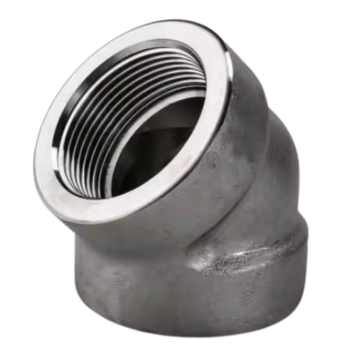
Forged Fittings
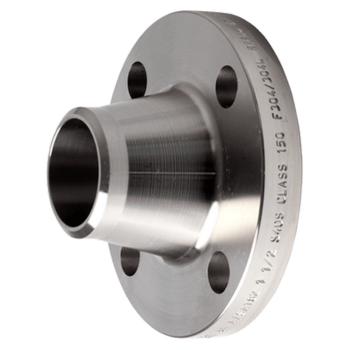
Flanges
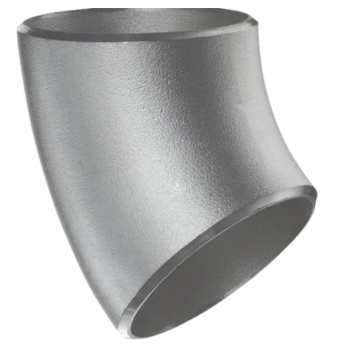
Buttweld Fittings
